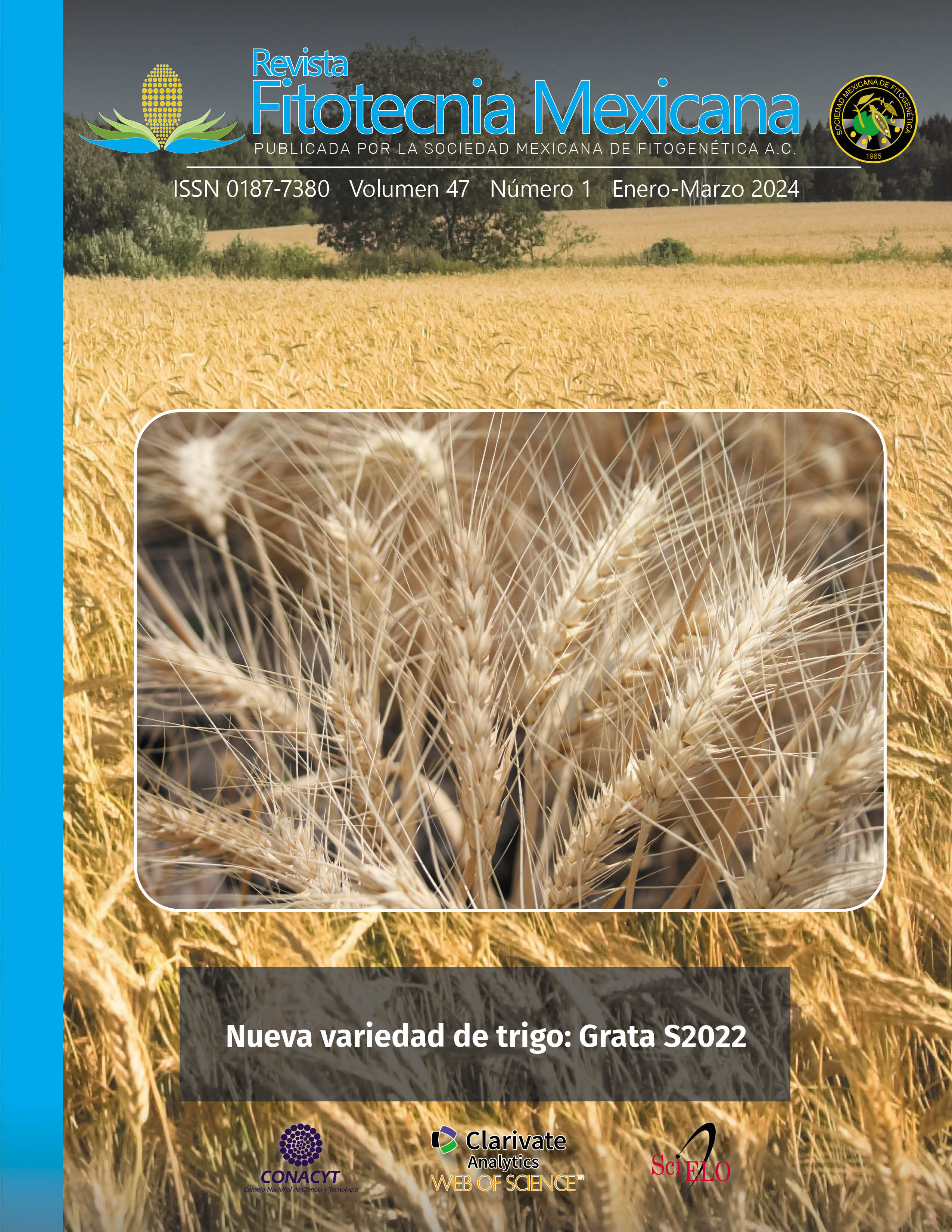EVOLUTION OF Puccinia triticina ERIKSON, THE CAUSE OF LEAF RUST OF DURUM WHEAT IN MEXICO
Main Article Content
Abstract
During the 2016-17/Autumn-Winter cycle in Southern Sonora, Mexico there was an epidemic of leaf rust, caused by the fungus Puccinia triticina Eriksson in the wheat variety Cirno C2008, resistant until the previous immediate cycle. Visible lesions appeared in early February 2017, gradually increasing the number of infested fields. Leaves with signs of the disease were collected in commercial fields and trap nurseries for analysis in the greenhouse. After purifying and obtaining monopustular isolates, the spores were increased, and differential plants for leaf rust were inoculated. In this way, the presence of a new race initially called BBG/BPCam, product of the evolution of BBG/BP identified during 2008, was determined affecting the varieties Banamichi C2004 and Júpare C2001. Two additional sets of differential plants were used to differentiate the two races,. The monopustular isolates of all samples indicated the presence of a new race called BBG/BPCJ, with the new nomenclature, and that evolved through a simple mutation in the race BBG/BP (BBG/BPCG with the new nomenclature) with virulence on the LrCam gene present in the variety Cirno C2008 and its progenitor Camayo. The analysis of the differentials and other controls at the seedling stage, indicated the absence of other changes in the pathogen virulence, apart from the aforementioned. Lines carrying Lr3 and Lr61, although susceptible to other races, remained effective against BBG/BPCJ. The genotypes where the presence of Lr14a was postulated and the lines of the cross Altar 2*/TcLr14a remained resistant to BBG/BPCJ in both seedling and adult plant. Since the introduction of BBB/BNGQ (BBG/BN) in Mexico in 2001, this rust race has continued to evolve and overcome specific resistance genes in durum wheat.

